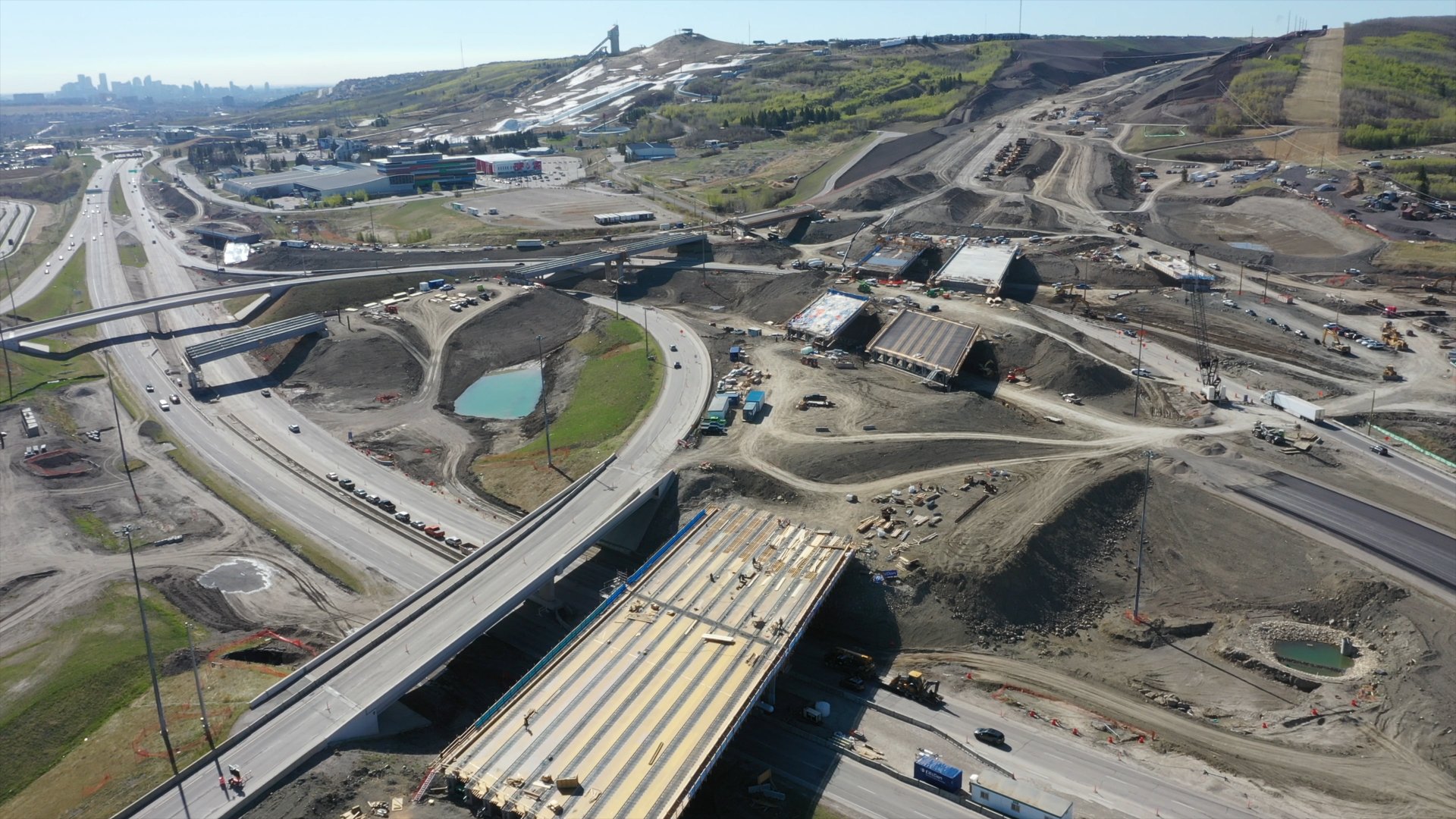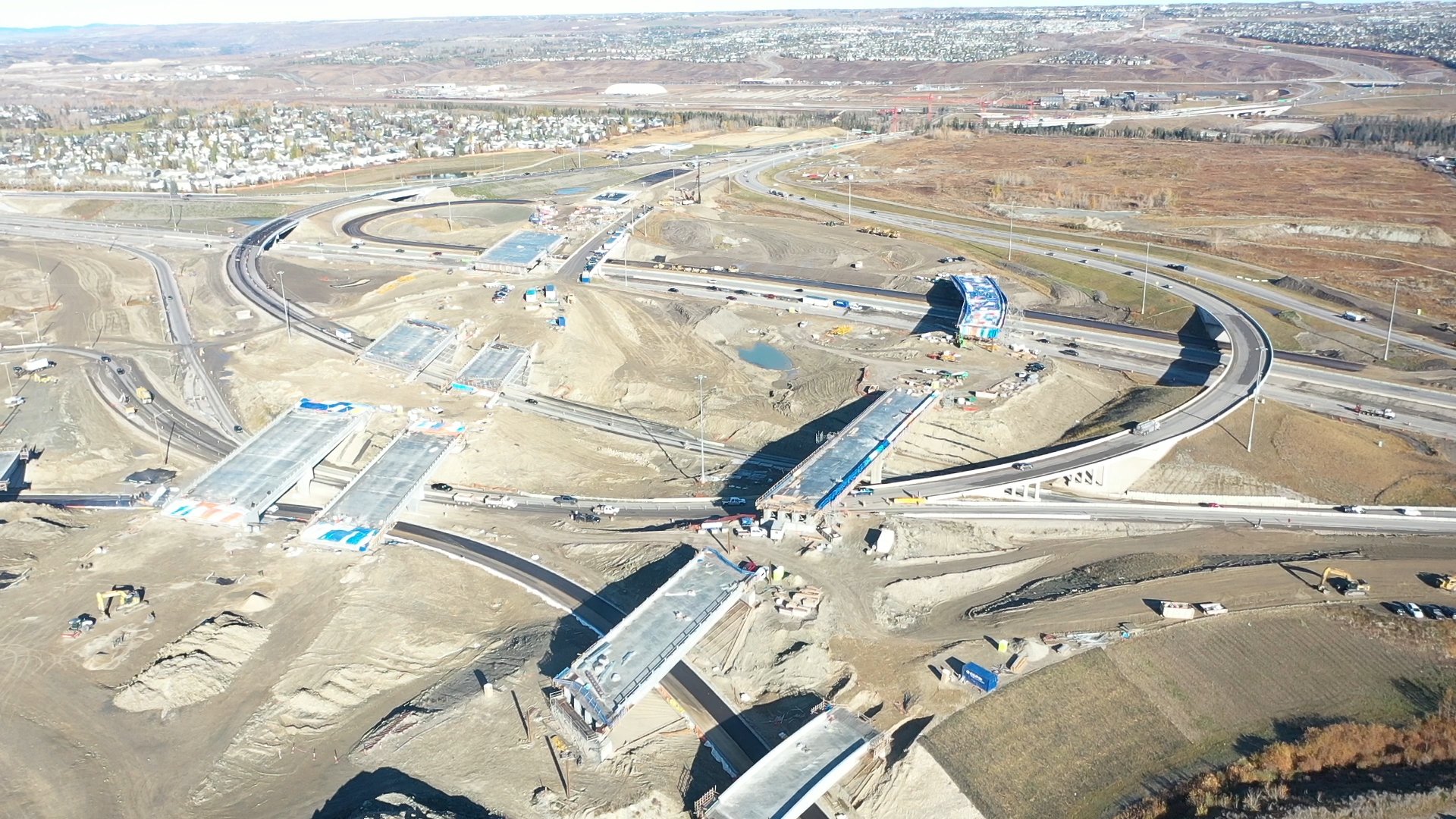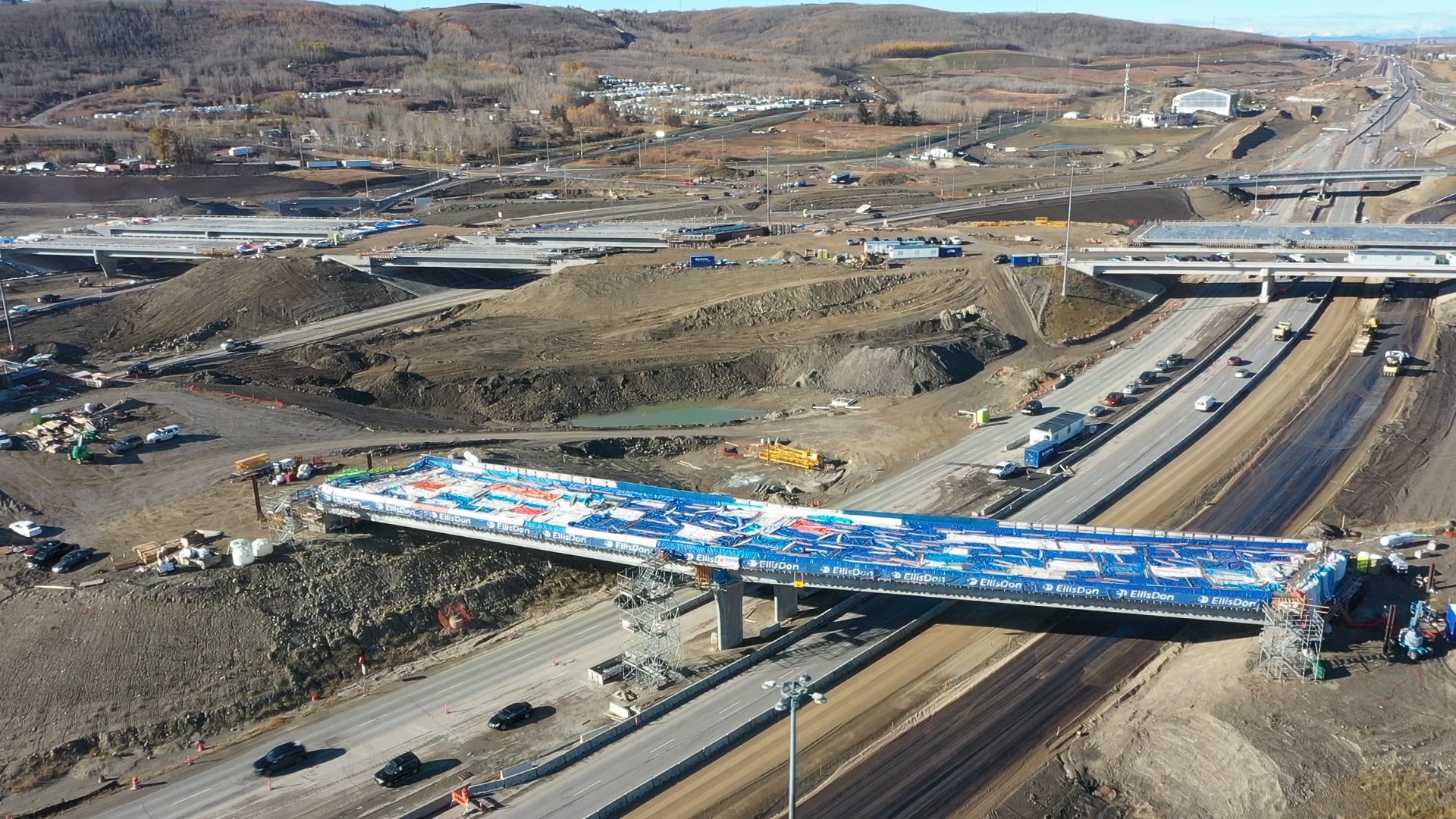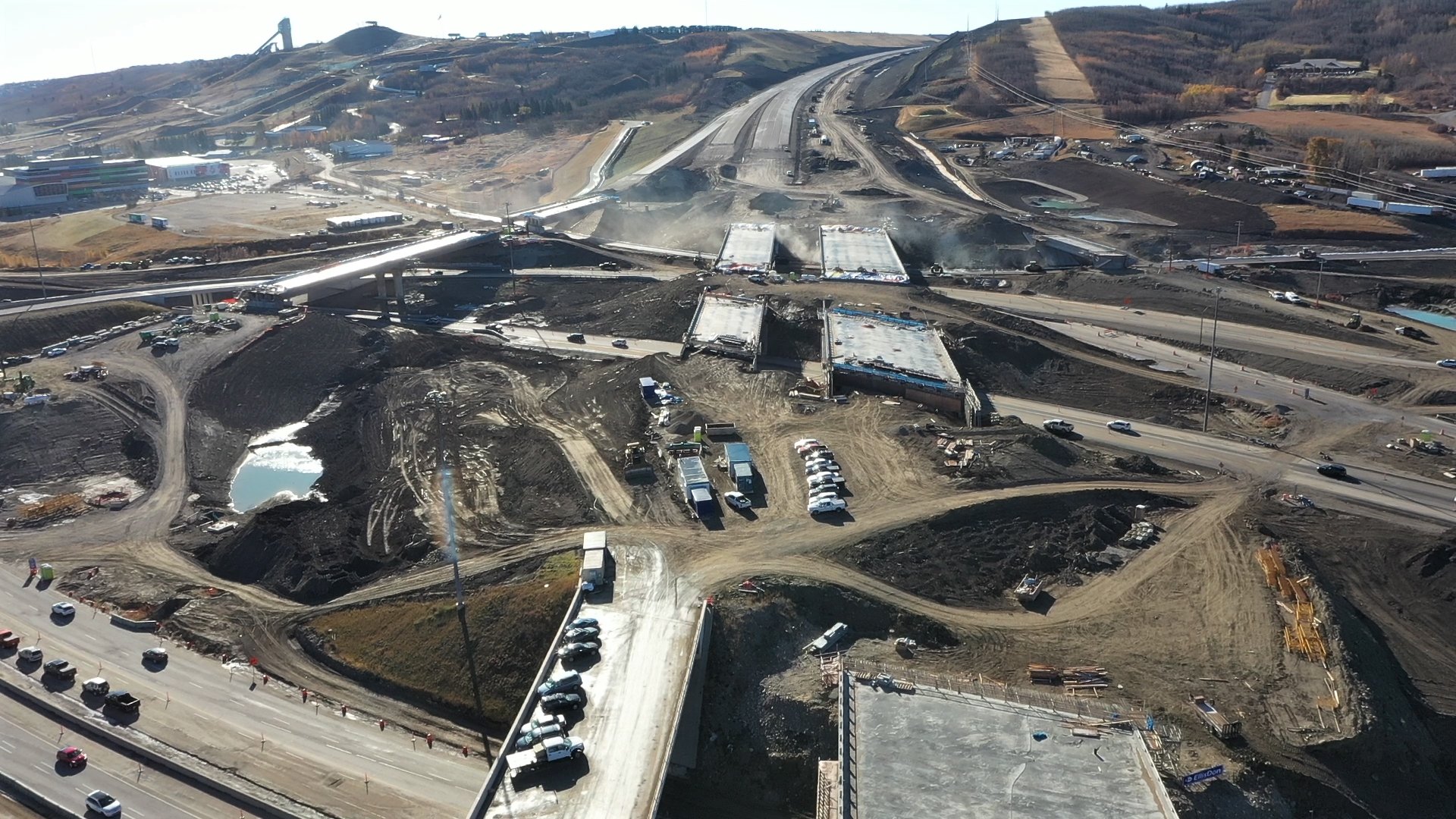calgary, Alberta
Building For The Future: The West Calgary Ring Road
Head west on Highway 1 through Calgary and you’ll soon find yourself amongst a high-flying scene of enormous scale. Colossal overpasses span the highway. Interchanges rise skyward. Earthworks, multiple storeys tall, tower overhead. Everywhere there are ribbons of concrete. Upwards. Outwards. This is the almost-completed West Calgary Ring Road, the whole of which will ease congestion while connecting the city to national and international trade partners as part of a larger east-west trade corridor.
The north portion of the West Calgary Ring Road, the section that intersects over Highway 1, is the responsibility of contractor and APEGA permit-holding company EllisDon. The project began in 2019, and Cyril Muise, project quality manager at EllisDon, has been on the job since day one. When asked to describe the work, he characterizes the construction as “tight.” Take a look at the scope of the project, and you begin to understand why.
“We are building 20 bridges, two interchanges, along with one partial bridge rehabilitation, all over and around the TransCanada Highway,” Cyril explains. The project includes construction of three kilometres of six- and eight-lane divided freeway and rebuilding large sections of Highway 1 itself. It’s a formidable combination of new-build and rehabilitation, integrated seamlessly within a few square kilometres. All of it built around one of the busiest highways in Western Canada, in a narrow corridor of land bordered by Calgary’s steep Paskapoo Slopes.
The volume of infrastructure and development concentrated in such a small footprint is daunting. But it's the always-open TransCanada corridor that's creating the real engineering challenge. Luke Denton, P.Eng., field engineer at EllisDon, explains that all of the work has been undertaken while the TransCanada remains free-flowing to traffic. “The logistics of building Highway 1 while maintaining and operating the highway throughout long weekends, throughout the summer at the busiest times of the year—we have to keep traffic flowing safely and efficiently.” Traffic, business, life. All have to keep moving in the face of construction. Even if you’re trucking in almost 60-metre-long overpass girders.







“We had the largest and heaviest concrete girders that have ever been fabricated in the province of Alberta on this project,” says Cyril. Used to support one of the many overpasses, each of these girders weighs 136,658 kilograms and had to be transported to the jobsite via a network of designated, oversized-load routes that criss-cross the province. This relied on professional geoscientists being involved in all of the piling activities for the bridges, the project’s retaining walls, and the soil stability analysis for all of the roadways.
From the modern to the ancient, the EllisDon team has even been working alongside paleontologists and archaeologists to catalogue discoveries unearthed from the soil. On one such occasion, while removing 42 metres of earth to grade a stretch of the Paskapoo Slopes, they discovered the fossilized remains of ancient marine life. The iconic slopes, sculpted by an ancient glacial lake thousands of years ago, house a rich collection of fossil deposits, many of which now live in the Royal Tyrrell Museum in Drumheller.
With one eye to the prehistoric past, the team remained focused on the future. For Venkata Vemana, professional engineer and technical director at EllisDon, that means building infrastructure that spans generations—a responsibility he believes lies firmly at the feet of the construction and engineering team.
This shared emphasis on quality and safety is exactly why Luke, Venkata, and EllisDon are regulated by the Association of Professional Engineers and Geoscientists of Alberta (APEGA). Protecting the public is paramount. It’s also why, when the West Calgary Ring Road opens in fall 2022, travellers can take pride in knowing these soaring structures, built on ancient ground, will stand tall for generations to come.

